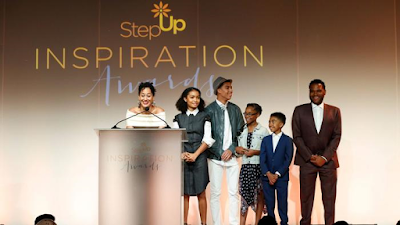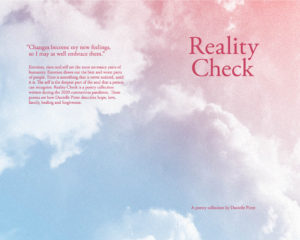 |
| In this Saturday, June 3 2017, photo provided by Thrive Images’ Amy Thierney, actress Tracee Ellis Ross speaks at Step Up’s Inspiration Awards at the Beverly Hilton Hotel in Los Angeles. Behind, left to right, Ross’ Black-ish co-stars: Yara Shahidi, Marcus Scribner, Marsai Martin, Miles Brown, Anthony Anderson. (AP Photo) |
In Variety’s Tracee Ellis Ross Speaks Words of Wisdom to Young Women at Step Up’s Inspiration Awards, television, radio and social media are used as major dissemination channels for the story.
The television channels could edit into segment on around Ross’ speech and her interaction with Anderson. They could edit the story just on the most important parts of her speech, especially for the young women who both know her as an actress and inspiration.
A popular black radio station, like The Breakfast Club, could introduce the story by playing the audio of Ross’ speech on the radio. People listening could hear and be inspired by her words and not focus so much on trivial features, like Ross’ hair or dress at the awards.
Since social media sites bank on being quick and fast-paced, a quote from Ross’ speech could be used on Twitter, Facebook. As for visual sites like Snapchat and Instagram, they could showcase part of her speech and in the caption, add the link for viewers to watch the rest of the speech on the website.
Example 1: Variety’s version of Ross’ speech was more focused on what she had said back to Anderson.
Even as Anderson tried to cap off her speech by saying to the audience, “I’m not a woman, but I understand your pain.” Ross clapped back with, “We are not in pain,” a response that received cheers and loud applause as the cast left the stage.
Variety’s headline drew the most attention by using the phrase “Tracee Ellis Ross Claps Back at Anthony Anderson at Step Up’s Inspiration Awards”. The clapback is in reference to when someone has a quick comeback to someone else’s snide comments. Variety’s headline worked because all four comments in the comments section felt resentful towards the headline itself. They commenters had to explain to another one on what the phrase “clapback” meant.
Example #2: LA Times version was more heartfelt and explained other events on top of Ross’ speech
This helps spread more positivity towards the story, especially for people who want to hear more context around Ross’ speech. It’s good that it shows more imagery to describe the love Ross has, not only for her Black-ish cast, but for the young women who may be hearing about her speech and award.






